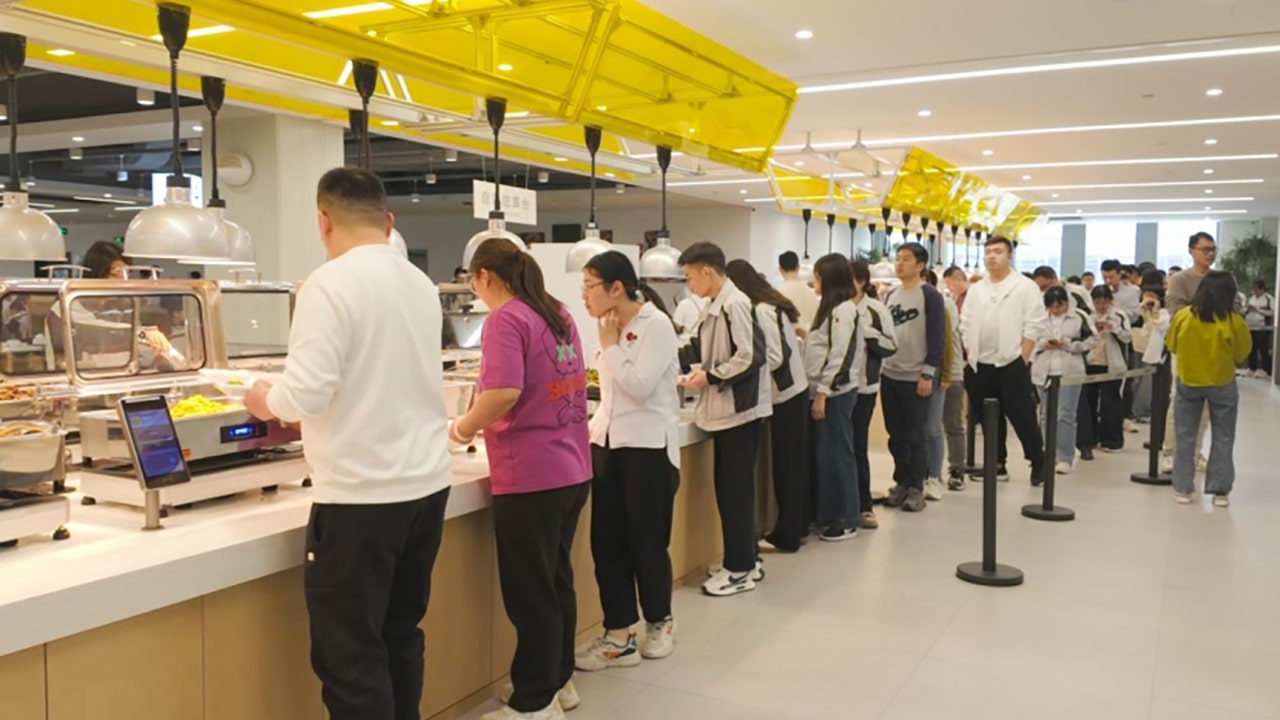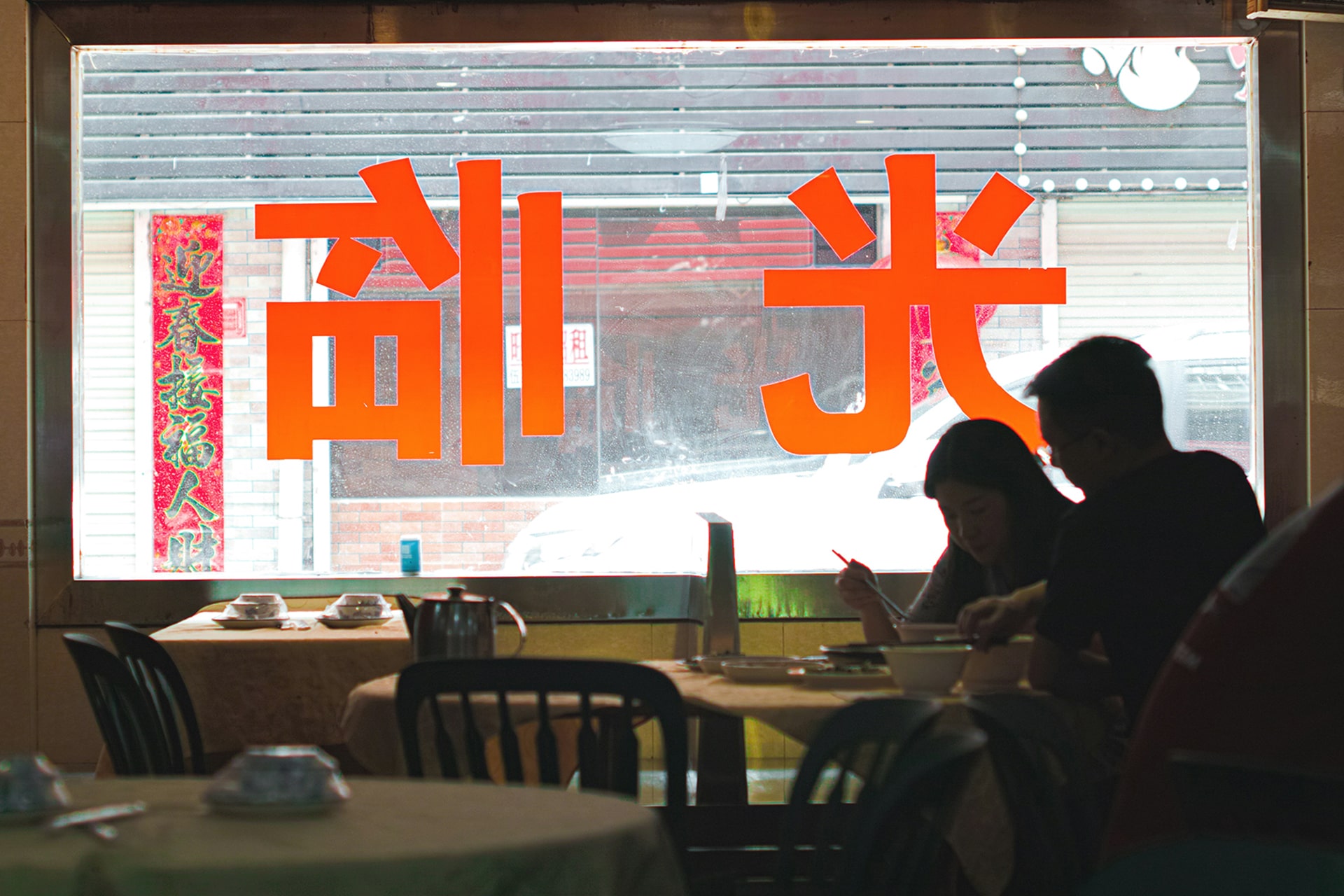After the controversy surrounding Xibei, pre-prepared dishes have become something of a taboo in the food and beverage industry. As a result, a new scene has emerged inside the back kitchens of chain restaurants: rows of cooking robots lined up in order. Even during peak hours, only a few staff members remain on duty, and their job is simply to pour pre-cut, recipe-portioned ingredients into the robots’ woks.
In under two minutes, the robot finishes a dish. Once the food is removed, the machine switches to a cleaning cycle to prepare for the next order.
The era of passing off pre-made dishes as freshly cooked is fading. This transition has been difficult for restaurant brands, but it has revived an entirely different industry. Geng Kaiping, CEO of T-chef Tech, told 36Kr that in the past month alone, the number of restaurant groups proactively requesting consultations has increased nearly tenfold. Its clients now include manufacturers such as Goertek, Muyuan Foods, and Foxconn.
For years, the restaurant industry struggled to balance serving speed, flavor consistency, and cost control. Traditional Chinese stirfrying delivers wok hei and layered flavor, but it is constrained by slow output, high labor costs, and dependence on skilled chefs, whose availability and skill levels vary widely.
Cooking robots offer an alternative. They can precisely control heat, standardize workflows, and reduce the need for manual labor. Many restaurant operators are now turning to a model that pairs fresh ingredients with automated cooking to maintain flavor, shorten wait times, and reduce staff costs.
A shift driven by intelligent kitchen equipment is quietly spreading across multiple dining formats.
Stepping out from behind the curtain
China’s restaurant industry has moved through three broad stages: the single-store era driven by chefs’ skills, the chain expansion era focused on standardization, and a new stage that prioritizes both value and quality. During the first two stages, many smart cooking devices already had the ability to reproduce a respectable level of smoky flavor and texture through precise temperature control and simulated tossing motions, similar to what experienced chefs achieve.
But when restaurants wanted to present themselves as “homecooked,” they kept robot use out of sight. Even last year, few brands openly acknowledged using such equipment.
This year, that hesitation has softened. Brands are increasing their robot purchases and openly displaying them in their back kitchens. Public filings show that Home Original Chicken has deployed cooking robots, intelligent steam cabinets, and smart soup cookers in about 388 restaurants. Since 2023, Xiaocaiyuan has also installed cooking robots in nearly 200 locations.
The reason is straightforward: diners now prefer a dish cooked fresh by a robot to one reheated from a central kitchen.
According to investors focused on the food sector, the rush to adopt cooking robots began as a direct response to the backlash against pre-prepared dishes. “Chains like Xibei used central kitchens and pre-prepared dishes to boost efficiency, but as consumers grew more resistant to pre-made food, brands urgently needed alternative solutions,” one investor told 36Kr.
Once the stigma faded, cooking robots began to look like the more practical option. The essence of Chinese stirfrying, precise heat control and consistent tossing, is where machines excel.
Through embedded sensors and intelligent heat control algorithms, robots can perform millisecond-level temperature adjustments to maintain optimal heat. The mechanical stirring arm follows a consistent rhythm, outperforming human output and avoiding uneven mixing caused by fatigue.

All T-chef Tech robot models are reportedly equipped with precision heat control, automated stirring, and smart ingredient dispensing systems. This data-driven approach is designed to ensure consistency across regions and store formats.
Robots can also help brands define their signature flavors while keeping quality stable. Beyond hardware, T-chef provides custom software and a proprietary AI-powered recipe platform. Through this platform, brands can adjust cooking programs according to dish characteristics and local taste preferences, such as specifying exact seasoning levels or customizing regional variants. The system also helps chefs refine new recipes and convert their experience into replicable digital guides.
This frees chefs from repetitive tasks and allows them to focus on creative menu development.
The dining industry has increasingly split into two segments: small family-run eateries that offer street-level familiarity, and chain restaurants that emphasize service, ambiance, and food that meets a reliable standard. With labor and rent rising and pre-made dishes losing appeal, robots have become a practical solution for the latter.
Market estimates suggest that a medium-sized T-chef cooking robot designed for casual eateries sells for about RMB 60,000 (USD 8,400). Each wok can produce three to five standard dishes per cycle, and the machines use durable materials and industrial-grade components with an expected lifespan of eight to ten years. Their average monthly operating cost is about RMB 600 (USD 84).
By comparison, Chinese restaurant chefs typically earn RMB 8,000–15,000 (USD 1,120–2,100) per month. A cooking robot can therefore save nearly RMB 10,000 (USD 1,400) per store each month, resulting in substantial long-term labor savings over an eight-year period.

Entering the factory floor
Beyond restaurants, cooking robots are quickly expanding into workplace cafeterias.
Muyuan Foods operates about 3,000 industrial pig farms across China. To prevent African swine fever, these sites restrict outside access. Many are located in remote areas, making it hard to hire professional chefs. Poor meal quality hurts employee retention.
To address this, Muyuan introduced T-chef Tech’s cooking robots. The machines are simple enough for workers to operate after brief training. More importantly, the automated workflow reduces manual involvement in kitchen operations, strengthening the farms’ strict biosecurity protocols. The solution has since expanded to other major and mid-sized livestock companies.
Enterprise cafeterias have long faced a dilemma. Companies want to offer fresh meals as a benefit, but relying on human chefs leads to high labor costs, inconsistent dishes, and substantial food waste. Cooking in large batches often causes shortages or excessive leftovers.
T-chef addresses these issues with a 15-channel precision system that manages ingredient dispensing and temperature control. For cafeteria settings, the company has built a closed-loop feedback system integrated with backend kitchen operations. At its center is an intelligent engine that works in real time with frontend devices to track remaining dish quantities, crowd flow, and other data, then make dynamic cooking decisions.

For Goertek, a major supplier in Apple’s supply chain, cafeteria operations must serve hundreds or thousands of employees at once, requiring high speed and consistency. After installing T-chef’s robots, its kitchens rely on batch capacity of 10–15 kilograms and fully automated cooking. Replenishment frequency is managed by the system, further reducing labor costs.
When the system detects that a popular dish has dropped to 50% of its portion level, it automatically instructs the robot to cook the next batch. From sauces and broths to main and supporting ingredients, the robot handles the entire sequence, ensuring the next pot is ready before the current one runs out.

This replenishment model allows employees to enjoy freshly cooked food even toward the end of peak hours. Because production is closely aligned with real-time demand, waste from inaccurate forecasting is minimized. Trials reportedly show that wastage can be reduced by more than 70%.
Whether in factory cafeterias or chain restaurants, cooking robots have moved into the open. Their growing presence reflects a broader reality: as long as the food industry demands standardization and efficiency, robots will continue to gain ground.
KrASIA Connection features translated and adapted content that was originally published by 36Kr. This article was written by Huang Nan for 36Kr.

